I've found that that a great way to learn about a region and its people is through its food culture – and for this area, it refers to the famous Appenzeller cheese. Since it was supposed to rain all day long, we figured it would be a perfect day for indoor activities. The part of the cheese factory open to visitors is quite small and it's a self-guided tour. The tour consists of a series of panels (some interactive) that explain the raw materials, the process and finally the end product of cheese. The panels surround the central attraction, which is a view into the cheese production facility itself, from a second floor viewing balcony. The most exciting part of the cheese making process that’s visible to the public is seeing the cheese moulds get filled and to see the rounds of cheese get turned automatically by a machine.
After checking with the reception that the next filling of the moulds wouldn’t be happening for a while yet, we started off by reading the various info panels and here are a few bits of trivia that we learned:
- About 1000 farms in the region supply the milk required to make Appenzell cheese – the cows only feed on Alpine pastures in the summer, hay in the winter (no silage) and are not given any antibiotics
- The herbal brine recipe and the freshness and pureness of the raw milk is what gives Appenzeller its distinctive taste – this recipe, which is derived of various fresh herbs, roots, leaves, flowers and rinds, is heavily guarded and only known in fully by two people
· Around 9000 tons of Appenzeller cheese are produced each year
· A cow produces on average 20 L of milk per day
In addition to the panels, you get a glimpse into their cheese cellars which are roughly two stories high and probably about 50 m long and 75 m wide. The cheese rounds are stored on some kind of wooden planks (Gruyere is stored on spruce as we learned later on) and are aged for various lengths (depending on the type of Appenzeller cheese being produced – the minimum aging time is 3 months for the Appenzeller Classic variety). There’s an automated machine that goes down each aisle, removing the rounds, flipping them over, brushing them with brine if required and then putting them back into place.
We then sat down in the little theatre to watch a ten minute presentation in English (normally in German but different languages available upon request) on Appenzeller cheese production – Rick Steves seems to think the presentation treads a fine line between informative and advertising but I found it mostly informative (or perhaps that’s because I knew already that I was going to buy the cheese before even entering the factory). The presentation ended with an overview of some of their most famous advertisements (which have immediate brand recognition in Switzerland at least) - I’m sure they would have been funny if we’d understood German.
After the presentation, we hovered by the viewing balcony to wait for the moulds to be filled. It was really interesting to watch the whole process and to see how efficiently it is done. There was only one person on the production floor managing the whole process. I had originally thought that it didn’t require much training or skill for that job since everything is mechanized but it turns out that the determination of when the cheese mixture is ready to pour into the moulds is still a manual process. The cheesemaker must determine when the cheese curds in the big aluminum vat are at the correct consistency and ready to be poured into the moulds.
The video is pretty self-explanatory and the only thing you may be wondering about is the circular sheets that are put into the moulds. These edible sheets are inked with the date, batch number and facility of production. This information transfers onto the rind and is one of their tracking and quality control mechanics.
After having watched the production of the cheese, we naturally had to go taste the different varieties (Appenzeller Classic, Surchoix, Extra, Bio, ¼ fat, ¼ fat mild and a few more). We tasted about five different varieties and some of them were just inedible in my opinion (especially the low fat options). Megs and I both really liked the Classic variety so we bought a chunk of that and had it for lunch.
After lunch, we walked over to the Appenzell Folk Museum which is conveniently located next to the cheese factory. This museum covers some of the history, culture and industries of the regions which includes cheese (surprise!) and embroidery. On the ground floor, there was an interactive display that asked you to match what the various types of Appenzeller were best accompanied by. We were surprised to learn that Classic went well with Espresso (will have to try that sometime)! There were amazing displays of cow bells and belts, some dating from the 1800s. To get an idea of the size of the bells, take a look at the photo of Megs standing next to the bells.
There was also a life size replica of an alpine farmer’s hut and all his cheesemaking equipment (in the summer months, the milk is turned into cheese up in the alpine huts as it takes too long to transport the milk back to a milk dairy). It was fascinating to see the ornate decorative woordwork on the cheese moulds and butter churns and moulds, too. There is also a life size model of a pack horse typical of the region that was used to carry cheese rounds and we were surprised to learn that a round of cheese weighed between 6-7 kg and they’d load up to 18 rounds per horse!
We then went downstairs which was dedicated to the embroidery industry that was once very successful in the region. A lot of the embroidery was done for the cowherders’ traditional garb which is still worn today, usually when they’re going to or returning from the Alps. The museum also has an original embroidery machine from 1885 that is still operational. Cloth measuring 4 m in width can be embroidered on it using 312 needles simultaneously.
We were fortunate enough to see a lady actually using the machine. She was embroidering a pattern of a dog onto a handkerchief and these were actually being sold at the museum. The embroidery industry came into existence because women were looking for independent work while the men were off in the Alps with the cowherds. Eventually, the industry died out because of the mechanization of the machines and the fact that they were too expensive for individuals to buy. We then wandered up to the second floor where they had artwork from regional artists. There were a couple of pieces that we really liked and there was also a wall painting from that dated back to 1597. Having completed our visit of the museum, we decided to head back to camp and have a relaxing afternoon since it was still raining fairly hard outside.
The next morning I finally got to try Rohmilch (that’s raw milk in German)! I woke up at 7:00 am to make sure I was in time get my fresh milk from the milk dairy. Leo, the owner of the campsite, had told me where and when to get the milk. I had asked his girlfriend, Sabuha, to write down in German "I’d like a liter of raw cow’s milk please". With my tupperware container in one had, camera over a shoulder, and my piece of paper, I walked over to the milk collection point which was only a few hundred meters from the campsite. On my way there, I heard some cow bells ringing, soon followed by singing…which could only mean another Alpabfahrt! I stood by to watch them pass and it was really neat to hear the farmers singing as they made their way.
The collection point is very inconspicuous and if you’re not looking for it, you’d just think it was another house. I saw a farmer bringing in his metal milk containers in the back of his truck and that clued me in that I was in the correct spot. He then took what looked like a vacuum hose off the side of the building stuck it into one of the containers. He flicked a button and the milk began to be sucked out of the container. I asked the man in charge if he spoke English and he shook his said so I pulled out my note and handed it to me. He took a second to read it and then smiled and beckoned me to come inside. When I went inside the building, I saw that milk from the vacuum is channeled into a large funnel that strains the milk after which I believe it enters a large stainless steel vat.
As the milk is being strained, the quality control samples are collected. The man took my tupperware container, crouched down beside the massive stainless steel vat and opened the tap. My container was filled in a few seconds and after asking him how much it cost, I handed him just 1 SF – if you ask me, that's a bargain for milk that fresh!
I marched back to camp very pleased with my morning’s success and sat down for a bowl of muesli with my raw milk. That evening, we used up more of the milk to make some hot chocolate, too. Being able to drink raw milk rounded off our Appenzell stay quite nicely and definitely complemented the Alpabfahrt, cheese factory and museum visit.
A crash course in Appenzeller history and culture
Friday, August 31, 2012
 Appenzell, Appenzell, Switzerland
Appenzell, Appenzell, Switzerland
Other Entries
-
5Picking up the van and off to Dover
Aug 0724 days prior Dover, United Kingdomphoto_camera15videocam 0comment 9
Dover, United Kingdomphoto_camera15videocam 0comment 9 -
6Rough Itinerary
Aug 0724 days prior Arques, Francephoto_camera0videocam 0comment 6
Arques, Francephoto_camera0videocam 0comment 6 -
7Arques Glass Factory
Aug 0922 days prior Arques, Francephoto_camera7videocam 0comment 4
Arques, Francephoto_camera7videocam 0comment 4 -
8Champagne!
Aug 1120 days prior Épernay, Francephoto_camera61videocam 0comment 9
Épernay, Francephoto_camera61videocam 0comment 9 -
9Verdun
Aug 1318 days prior Verdun, Francephoto_camera35videocam 0comment 4
Verdun, Francephoto_camera35videocam 0comment 4 -
10Hiking in the Vosges
Aug 1615 days prior Xonrupt-Longemer, Francephoto_camera41videocam 1comment 9
Xonrupt-Longemer, Francephoto_camera41videocam 1comment 9 -
11Grand vues from the Route des Crêtes
Aug 1912 days prior Ramonchamp, Francephoto_camera63videocam 1comment 7
Ramonchamp, Francephoto_camera63videocam 1comment 7 -
12Stork sighting at the écomusée
Aug 2011 days prior Ungersheim, Francephoto_camera43videocam 0comment 7
Ungersheim, Francephoto_camera43videocam 0comment 7 -
13Colmar
Aug 2110 days prior Colmar, Francephoto_camera48videocam 0comment 2
Colmar, Francephoto_camera48videocam 0comment 2 -
14Cute towns and Villages Fleuris
Aug 229 days prior Eguisheim, Francephoto_camera30videocam 0comment 1
Eguisheim, Francephoto_camera30videocam 0comment 1 -
15Wine & Grape tasting in Riquewihr
Aug 238 days prior Riquewihr, Francephoto_camera30videocam 0comment 2
Riquewihr, Francephoto_camera30videocam 0comment 2 -
16Haut Koenigsbourg
Aug 247 days prior Chateau Du Haut Koenigsbourg, Francephoto_camera36videocam 0comment 7
Chateau Du Haut Koenigsbourg, Francephoto_camera36videocam 0comment 7 -
17Fountains and Lights in Strasbourg
Aug 265 days prior Strasbourg, Francephoto_camera71videocam 2comment 3
Strasbourg, Francephoto_camera71videocam 2comment 3 -
18Clocks and Cakes
Aug 283 days prior Furtwangen, Germanyphoto_camera14videocam 0comment 4
Furtwangen, Germanyphoto_camera14videocam 0comment 4 -
19Off to Switzerland
Aug 283 days prior Schaffhausen, Switzerlandphoto_camera9videocam 0comment 1
Schaffhausen, Switzerlandphoto_camera9videocam 0comment 1 -
20Barfussweg
Aug 292 days prior Appenzell, Switzerlandphoto_camera29videocam 0comment 5
Appenzell, Switzerlandphoto_camera29videocam 0comment 5 -
21When the cows come marching in...Alpabfahrt!
Aug 301 day prior Appenzell, Switzerlandphoto_camera25videocam 1comment 5
Appenzell, Switzerlandphoto_camera25videocam 1comment 5 -
22A crash course in Appenzeller history and culture
Aug 31 Appenzell, Switzerlandphoto_camera43videocam 5comment 1
Appenzell, Switzerlandphoto_camera43videocam 5comment 1 -
23Stamp Stop in Liechtenstein
Sep 011 day later Vaduz, Liechtensteinphoto_camera22videocam 1comment 4
Vaduz, Liechtensteinphoto_camera22videocam 1comment 4 -
24Lucerne
Sep 022 days later Lucerne, Switzerlandphoto_camera55videocam 0comment 3
Lucerne, Switzerlandphoto_camera55videocam 0comment 3 -
25Bears in Bern
Sep 033 days later Bern, Switzerlandphoto_camera36videocam 0comment 0
Bern, Switzerlandphoto_camera36videocam 0comment 0 -
26Murten
Sep 044 days later Murten, Switzerlandphoto_camera16videocam 0comment 1
Murten, Switzerlandphoto_camera16videocam 0comment 1 -
27Cailler Chocolate Factory
Sep 044 days later Broc, Switzerlandphoto_camera30videocam 3comment 2
Broc, Switzerlandphoto_camera30videocam 3comment 2 -
28Gruyère production
Sep 055 days later Gruyères, Switzerlandphoto_camera54videocam 6comment 3
Gruyères, Switzerlandphoto_camera54videocam 6comment 3 -
29Château de Chillon
Sep 066 days later Montreux, Switzerlandphoto_camera29videocam 0comment 2
Montreux, Switzerlandphoto_camera29videocam 0comment 2 -
30A busy "rest day"
Sep 077 days later Aigueblanche, Francephoto_camera23videocam 1comment 4
Aigueblanche, Francephoto_camera23videocam 1comment 4 -
31Col de l'Iseran
Sep 099 days later Lanslebourg-Mont-Cenis, Francephoto_camera35videocam 0comment 2
Lanslebourg-Mont-Cenis, Francephoto_camera35videocam 0comment 2 -
32The toughest bike ride of my life
Sep 1010 days later Saint Michel de Maurienne, Francephoto_camera40videocam 0comment 3
Saint Michel de Maurienne, Francephoto_camera40videocam 0comment 3 -
33Croix de Fer
Sep 1111 days later Le Bourg-d'Oisans, Francephoto_camera23videocam 0comment 5
Le Bourg-d'Oisans, Francephoto_camera23videocam 0comment 5 -
34Alpe d'Huez
Sep 1313 days later Alpe d'Huez, Francephoto_camera23videocam 0comment 3
Alpe d'Huez, Francephoto_camera23videocam 0comment 3 -
35Col du Lautaret
Sep 1414 days later Col du Lautaret, Francephoto_camera37videocam 0comment 1
Col du Lautaret, Francephoto_camera37videocam 0comment 1 -
36Col d'Izoard
Sep 1515 days later Briançon, Francephoto_camera37videocam 0comment 6
Briançon, Francephoto_camera37videocam 0comment 6 -
37Briançon
Sep 1616 days later Briançon, Francephoto_camera30videocam 0comment 3
Briançon, Francephoto_camera30videocam 0comment 3 -
38Mont Ventoux
Sep 1818 days later Malaucene, Francephoto_camera47videocam 0comment 1
Malaucene, Francephoto_camera47videocam 0comment 1 -
39Escargots & Grenouilles
Sep 1919 days later Pont en Royans, Francephoto_camera44videocam 0comment 4
Pont en Royans, Francephoto_camera44videocam 0comment 4 -
40Choranche Caves
Sep 2020 days later Pont en Royans, Francephoto_camera30videocam 0comment 3
Pont en Royans, Francephoto_camera30videocam 0comment 3
Photos & Videos
Legacy Video (flv)
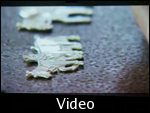
description
Legacy Video (flv)
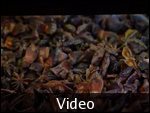
description
Legacy Video (flv)
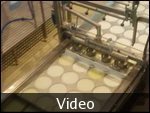
description
Legacy Video (flv)
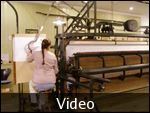
description

 Appenzell, Appenzell, Switzerland
Appenzell, Appenzell, Switzerland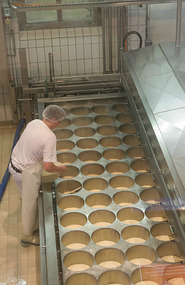
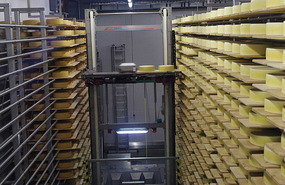
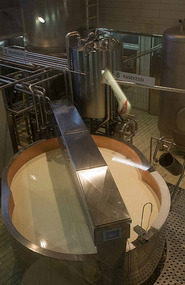
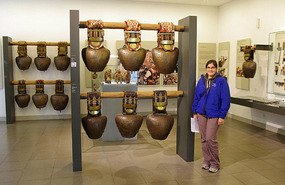
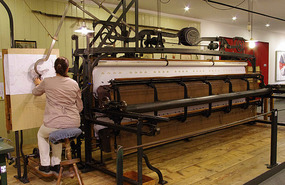
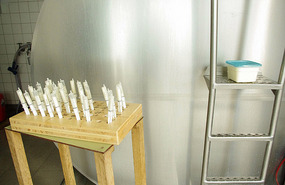






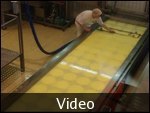































2025-05-22